The Italian Farmer Returning Chickens to the Wild
His chestnut forest is home to thousands of hens.
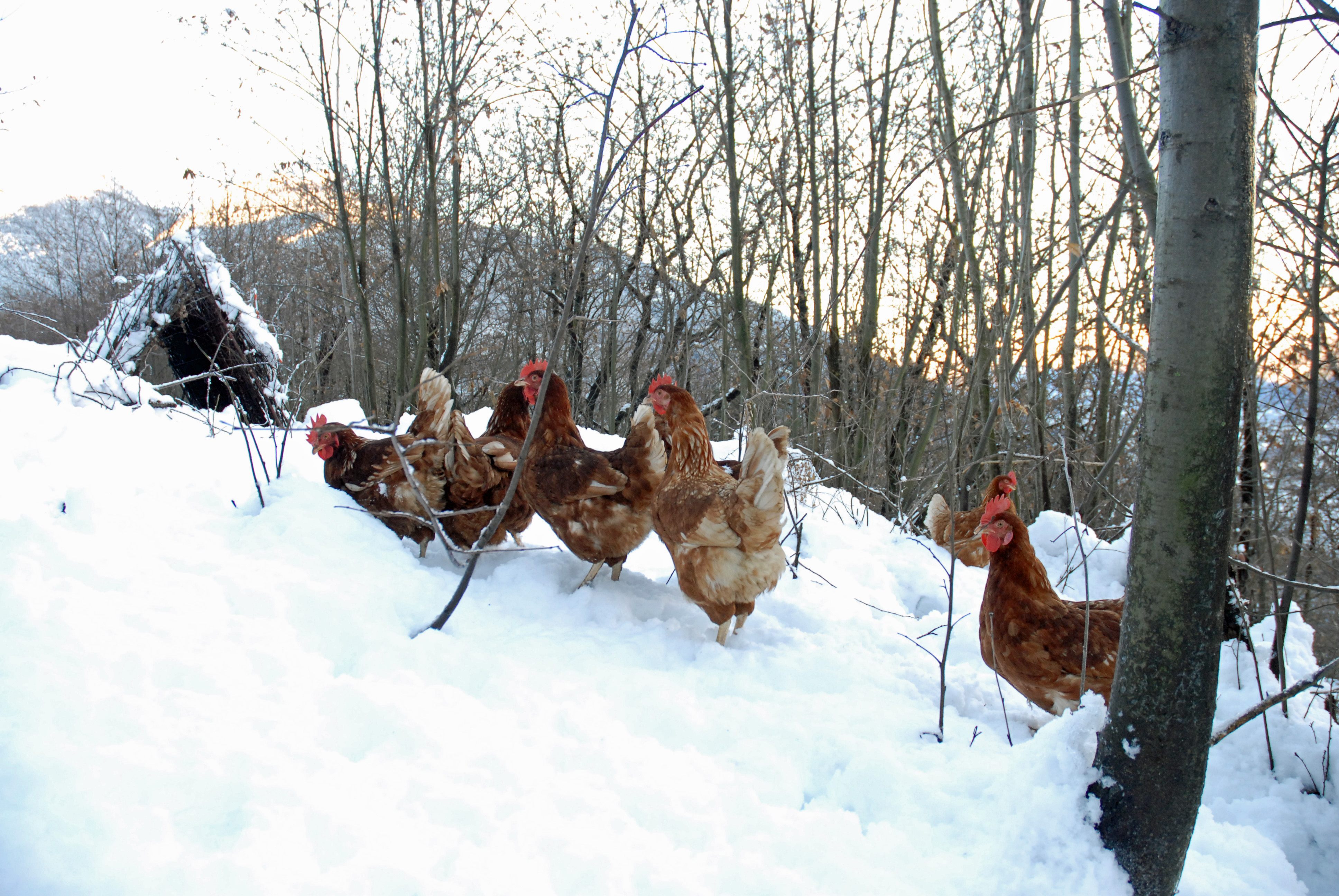
Chickens as we know them are a human invention. The most common chicken species, Gallus gallus domesticus, owes its existence to the domestication of four species of wild jungle fowls, a group of colorful birds that once roamed the tropical forests of Southeast Asia. As early as 10,000 years ago, people began to keep these jungle-roaming creatures for everything from egg-laying to bird-fighting. Today, poultry is the second most common type of meat around the world after pork. But most contemporary chickens no longer enjoy the freedom of their distant cousins.
Massimo Rapella, a 48-year-old chicken farmer from northern Italy, is helping chickens rediscover their wild side. Since 2009, Rapella and his wife Elisabetta have been keeping an estimated 2,100 hens in a patch of pristine Alpine forest near Sondrio, in the heart of the Valtellina valley. Visiting their farm feels like stepping into an enchanted mountain kingdom, albeit one ruled by fluffy birds.
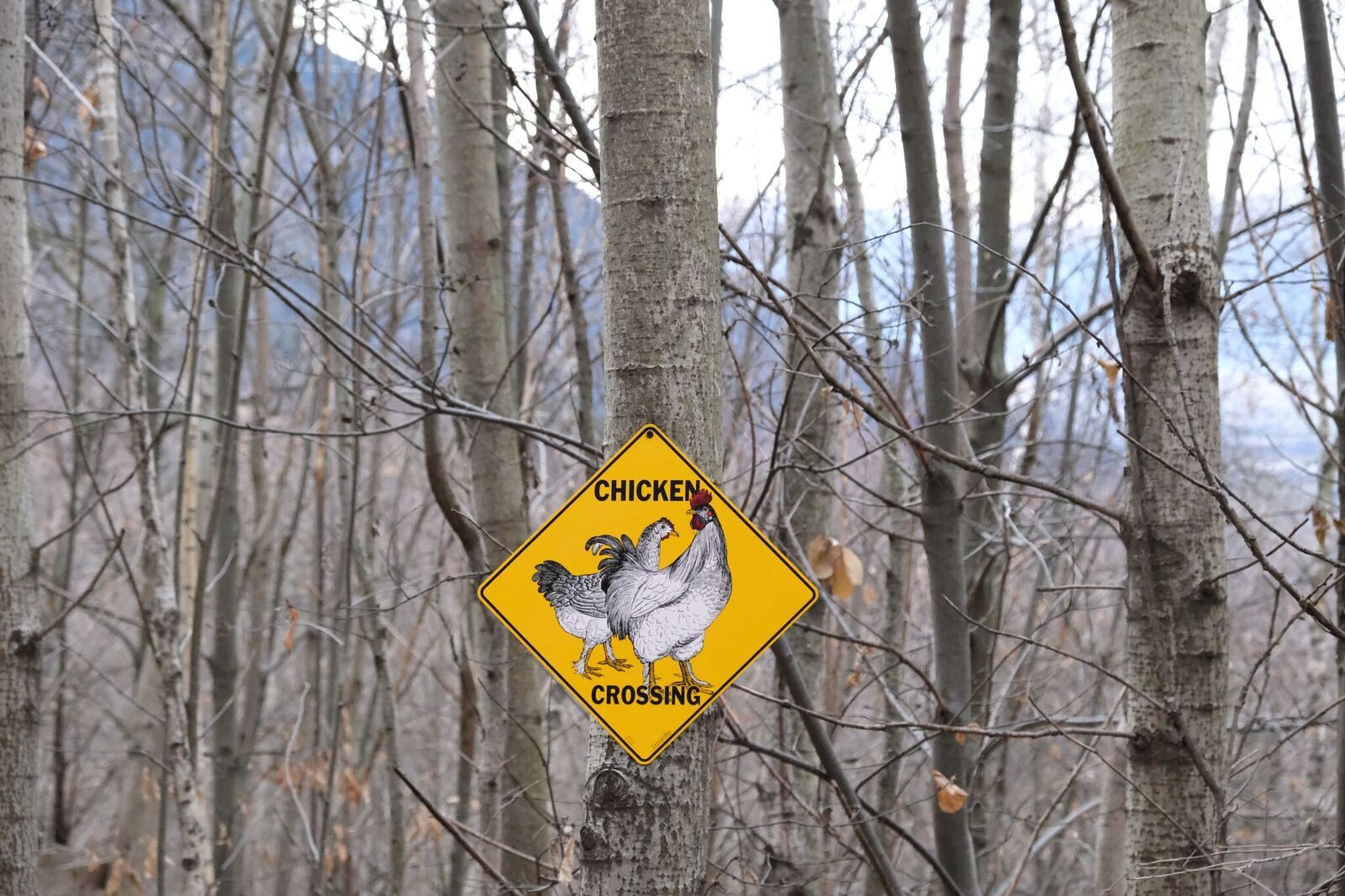
From Milan, it takes a little more than an hour to drive up to Rapella’s estate, along a scenic route that offers dramatic views of Lake Como. His farm could be mistaken for one of the many pasture huts kept by cow farmers in this part of the Alps. But the sound of clucking and a “Chicken Crossing” sign reveal the farm’s true purpose: producing Alpine eggs.
Rapella, though from the area, hasn’t always been into animal husbandry. “I became a chicken farmer by accident,” he says. He used to run an education NGO with his wife in the nearby town of Sondrio. When the 2008 financial crisis hit, the Italian government cut funding for social enterprises and the couple decided to move to the mountains. Shortly after relocating, Rapella and his wife started keeping a few chickens to provide eggs for their own consumption. But soon enough they noticed some unexpected behavior from their flock. “Our chickens liked roaming around the nearby woods,” Rapella explains. “So I encouraged them to venture out and lay eggs in the wild.”
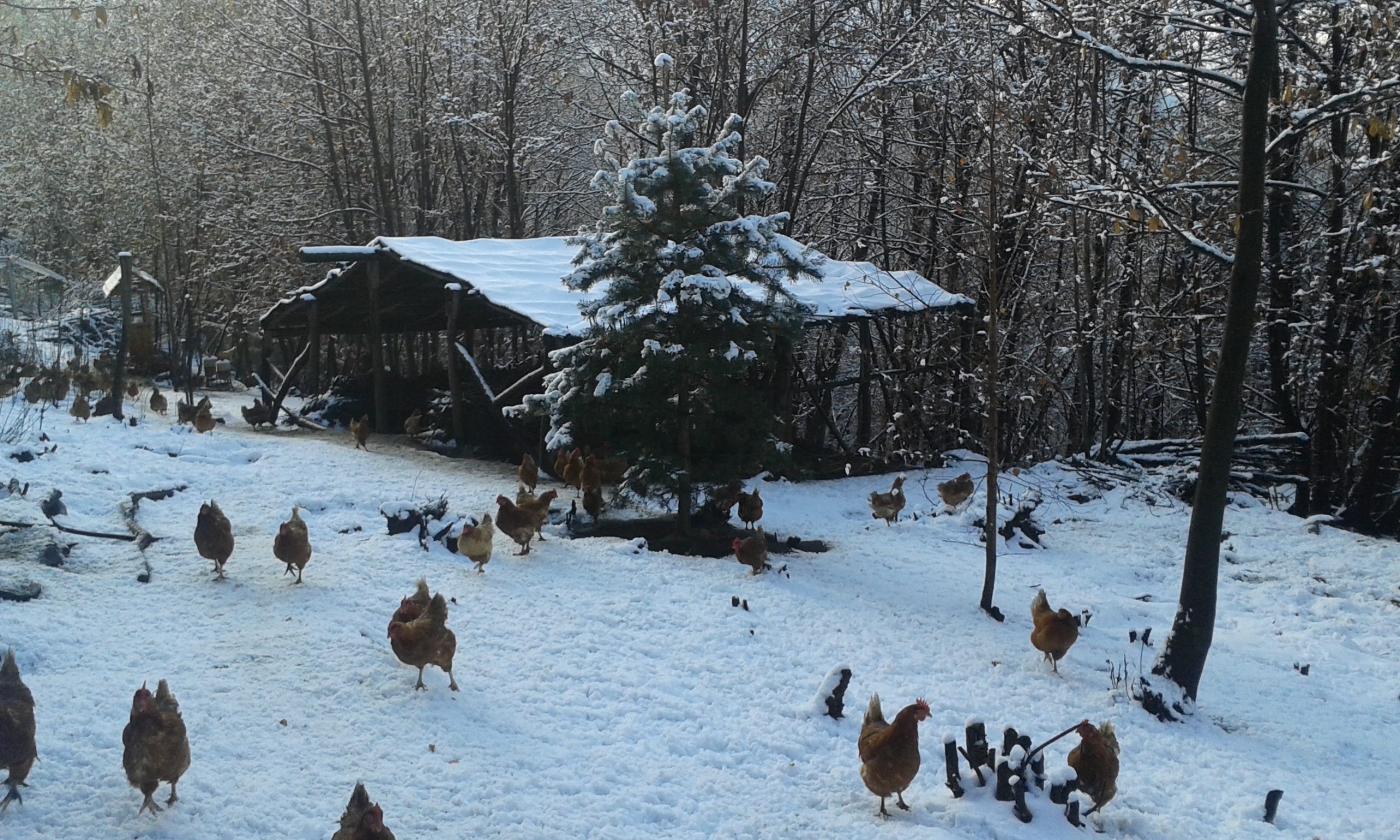
A few months later, Rapella saw that the birds looked healthier—with shiny feathers and bright-colored wattles—and that their eggs had a fuller taste. “I started wondering if I could take on more chickens and create an ‘Alpine egg’ to sell in local markets,” he says. Today, he sells his uovo di selva, or egg of the woods, to about 400 direct consumers and 40 restaurants.
Though he’s far from the steamy jungle, Rapella’s success may be rooted in the genetic heritage of the common chicken. “The main ancestor of the chicken, the red jungle fowl, was a wild-roaming bird,” says Phillip J. Clauer, an assistant teaching professor of animal science at Penn State University. “It would ward off predators and forage for food in the wild.”

Red jungle fowls, like most wild birds, only lay eggs twice a year. But domestic chickens can lay eggs nearly every day. That’s because humans adapted them to do so. The first evidence of human-induced egg production goes back to ancient Egypt, with “incubation ovens” built to hatch chicks, freeing up hens to produce more eggs. Other techniques included record keeping and genetic selection. “Humans started to keep records of which birds lay eggs more frequently, and would selectively incubate eggs of those birds only,” Clauer explains. Selection for meat production worked in a similar fashion.
But their food use was not the only reason that led to the domestication of wild fowls. Religion also played a role. Roosters were considered a sacred bird in many ancient cultures, from China to the Roman Empire. Priests used chicken sacrifices to quell demons, and watched them feed to predict the outcomes of war. Another use for chickens was fairly unholy: cockfighting, the practice of watching two roosters battle each other. Many species of European chickens were developed out of “fighting birds” transported from Asia.

But with human domestication came the loss of crucial survival skills. Most domestic chickens today would not find themselves at home in a forest: at least, not immediately. “The first large batch of chickens I took in looked very lost,” Rapella says. “They had never seen a tree nor a bug in their life, and they were scared of snow.” Initially, the hens lingered just outside their coops. But after a few weeks, one intrepid hen ventured out into the depths of the woods and showed the way for the rest of the flock. One month later, they were all trekking through the chestnut forest at their disposal.
Soon, they started to display some of the behaviors of their ancestors. Red jungle fowls are omnivorous foragers. They feast on leaves and bugs they find in the forest. So do Rapella’s chickens. “They eat whatever they find in the undergrowth,” he explains. “Mostly chestnuts, leaves, worms, and ants.” Dust baths are a common grooming technique practiced by wild and domesticated fowl alike. When chickens roll in the dust, they’re cleaning off parasites, Rapella notes as we pass by a group of hens rubbing their feathers onto the ice-covered ground.

But some pre-domestication traits can’t be recreated. While wild jungle fowl can “lightly coast from branch to branch,” Clauer says, domestic chickens bred by humans to bear more meat are too heavy. Even their plumage can prove a problem. Humans had no interest in breeding predator-resistant birds. “White birds really stand out to predators,” Clauer says. Rapella keeps two different breeds of chicken: Hy-Line brown hens and the easy-to-spot white Leghorns. While he once lost the occasional chicken, now he relies on a double fence and two trained Maremma sheepdogs to keep badgers, martens (a weasel-like carnivore), foxes, and buzzards at bay.
Rapella’s chickens lay eggs almost every day, like any domesticated chicken, but they do so in the woods. “They like natural nests offered by tree roots or branches,” he says. “Usually when you spot a cranny with some leaves, you know there could be eggs.” Once a hen finds her favorite nesting spot, she goes back to it for each subsequent laying, making Rapella’s egg-hunting easier. Together with two employees, he gathers an estimated 1,000 eggs every morning.
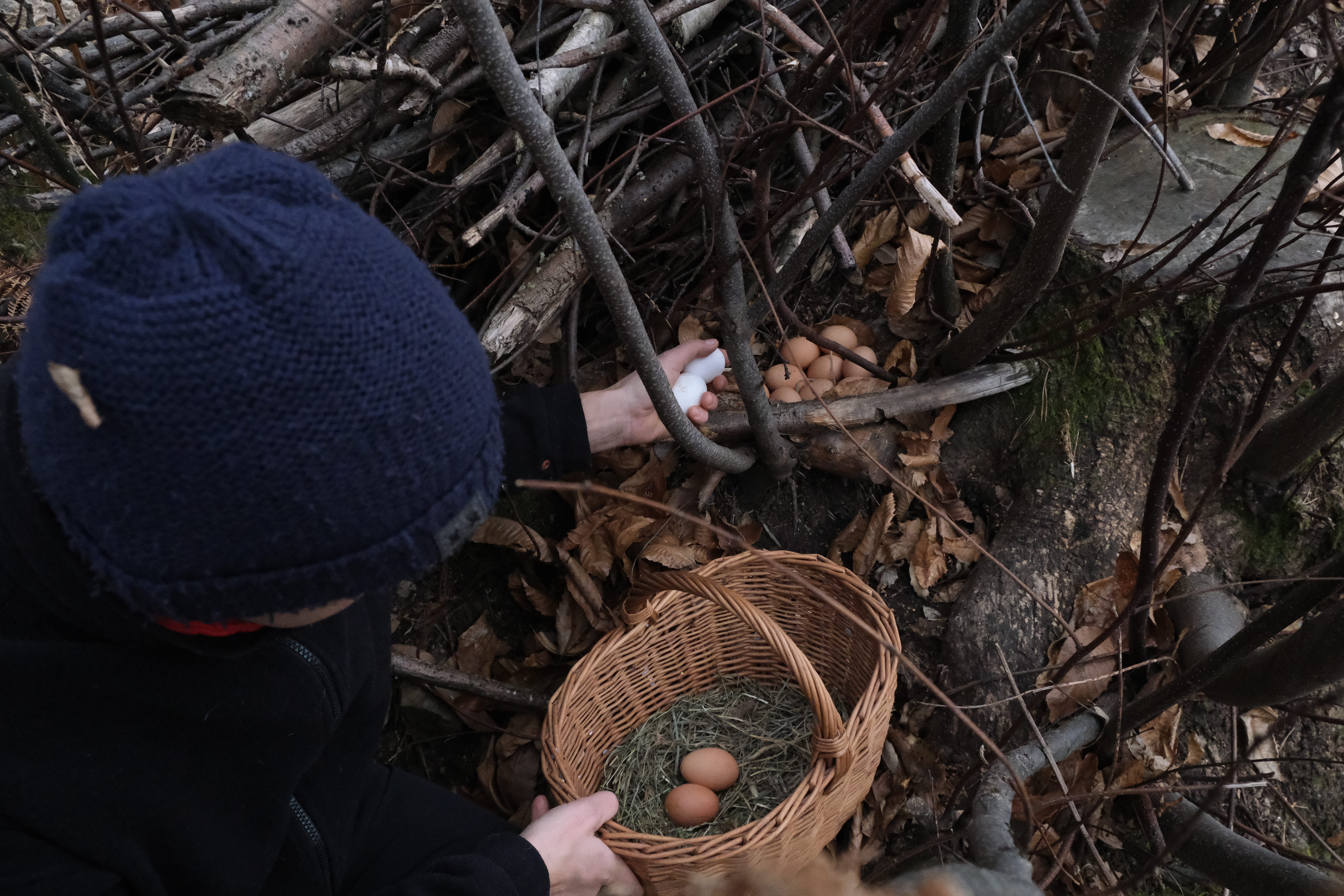
His uovo di selva tastes like egg, but concentrated. There’s more flavor to it, and also more protein, due to the bug-filled diet of the chickens. As a result, when chefs whip the whites from Rapella’s protein-rich eggs, they get three times the volume. The egg yolk can even change with the seasons. In autumn, when chickens feast on tannin-rich chestnuts fallen from the trees, it takes on a darker color and richer taste. The difference is perhaps best appreciated when tasting Rapella’s homemade egg pasta. The flavor is so rich, it almost can be eaten plain. The idyllic, active life that Rapella’s chickens enjoy might have something to do with it.
Indeed, Rapella’s birds are spared from the stressful situations that can arise from being cooped up. According to Cauer, chicken farmers often have to deal with aggression issues amongst their flocks, even to extremes such as cannibalism. But Rapella hardly ever sees hostile behavior in his own flock. “Chickens are social creatures, so they tend to form groups of 15, 20 hens,” Rapella says. “Each gang finds its spot in the forest and sticks to it.” His Leghorns seem to be more individualistic. He often finds them perched on tree branches by themselves.

According to Paul Wheaton, a permaculture expert who runs a popular blog on farming, keeping chickens in a setting that recreates their original forest habitat is best for both animal welfare and feeding costs. Yet most of the 50 billion domesticated chickens around the world live in enclosed environments. Wheaton notes that this goes against the natural predisposition of chickens. “I see people build massive, elaborate stuff for raising chickens that deprive them of fresh foods or bugs even in the summer,” he writes.
The only issue he identifies with Rapella’s approach is the erosion of ground nutrients caused by chicken excrement. According to Rapella, though, his Alpine location spares him this problem. “We are on a slope so whenever it rains, it washes everything down.” Plus, chestnut trees thrive on highly acidic terrain, so acidic chicken excrement acts as manure. A few years ago, a damaging insect infestation hit the surrounding area. While it killed off many chestnut trees, Rapella’s forest was spared. He thinks it’s thanks to chicken poop. “It’s really an ecosystem between plants and birds,” he says.

In Rapella’s forest, chickens are kept in far more humane conditions than most chicken farms and enjoy better living conditions than many feral chickens out in the wild. While his product has proved popular, Rapella refuses to replicate his model. Free-range farmers from around Italy have asked him to set up wild chicken farms in other parts of the country. “But I always say no.” The secret to his success, he thinks, is this very land. “My eggs were born out of this forest here in Valtellina,” he says. “It would never be the same elsewhere.”
Gastro Obscura covers the world’s most wondrous food and drink.
Sign up for our regular newsletter.




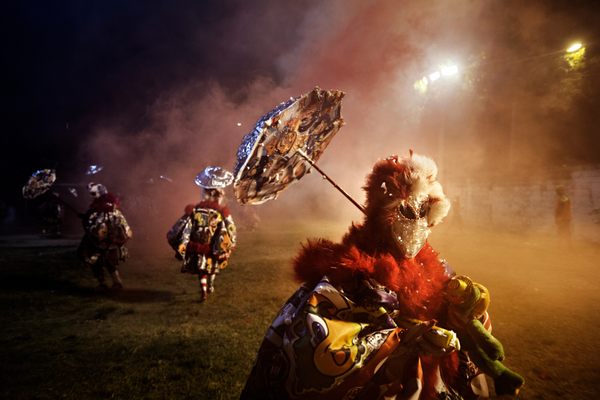

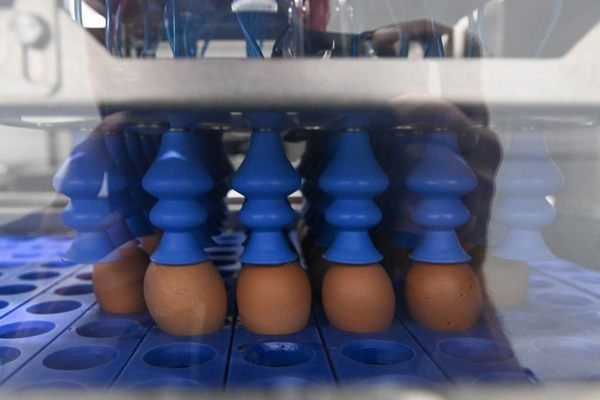



























Follow us on Twitter to get the latest on the world's hidden wonders.
Like us on Facebook to get the latest on the world's hidden wonders.
Follow us on Twitter Like us on Facebook